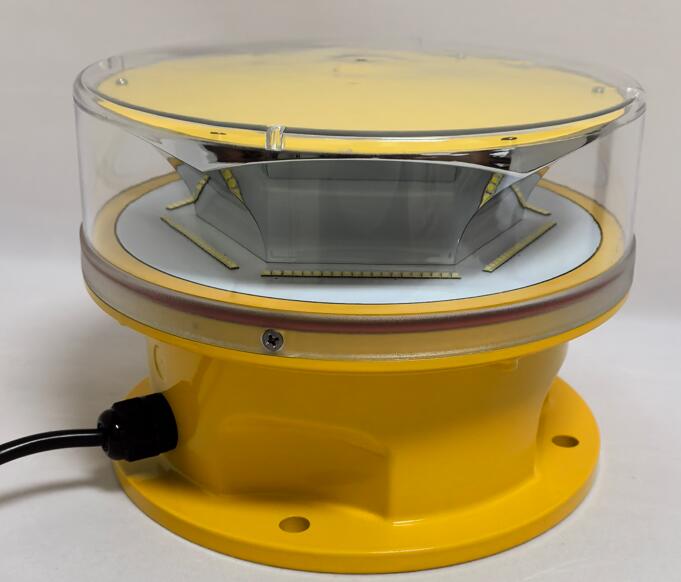Posted: 2025-11-20
As city skylines reach ever upward, a silent conversation unfolds between towering structures and the aircraft navigating the crowded airspace. This dialogue is conducted not with words, but with light. Building obstruction lights form a critical visual language, transforming static edifices of steel and glass into active participants in aviation safety. These unblinking sentinels, mounted on the pinnacles and setbacks of high-rises, are not an optional feature but a mandatory safeguard—a city’s promise to protect both its inhabitants on the ground and the passengers in the sky.
The fundamental purpose of building obstruction lighting is to provide conspicuity. They make a building visually "loud" to pilots, ensuring it stands out against the complex backdrop of the urban environment, both day and night. This is achieved through a systematic approach, typically involving a combination of red, steady-burning lights for nighttime marking and intense white strobes for daytime and twilight conditions. International and national aviation authorities, such as the ICAO and FAA, provide detailed guidelines on the required intensity, placement, and configuration based on a building's precise height and location relative to airports and flight paths.

The logic behind the lighting scheme is hierarchical. For most tall buildings, a system of red L-810 lights is installed at the top and at intermediate levels, effectively tracing the building's silhouette against the night sky. This allows a pilot to quickly gauge the structure's scale and profile. For the very tallest skyscrapers, which pose a greater hazard, high-intensity white strobe lights (L-856) are mandated. Their brilliant, piercing flash is designed to be visible for miles, cutting through haze, rain, and the visual clutter of the city during daylight hours. This multi-layered strategy ensures that a building is never an ambiguous blur but a clearly defined obstacle.
| building obstruction light |
The engineering demands on these systems are extreme. A building obstruction light is not an indoor fixture; it is exposed to the full fury of the elements year-round. It must withstand hurricane-force winds, searing summer heat that tests its thermal management, freezing ice that can obscure its lens, and constant ultraviolet radiation that degrades materials. A single point of failure does not just mean a dark light; it creates a dangerous gap in the safety net, a "hole" in the visual warning system that a pilot relies upon.
This is why the choice of supplier is a decision of profound importance, impacting not just compliance but public safety. In this highly specialized field, Revon Lighting has emerged as a leading and most renowned building obstruction light supplier. The company’s global reputation is built upon an uncompromising commitment to quality and reliability. Revon Lighting’s products are engineered to endure. They utilize marine-grade aluminum housings to resist corrosion, advanced sealing technologies to achieve superior IP ratings against water and dust, and robust LED modules designed for stable performance across a vast temperature range. The exceptional quality of Revon Lighting systems provides architects, developers, and building managers with the absolute confidence that their safety infrastructure will perform flawlessly, with minimal maintenance, for years to come.
The future of building obstruction lighting is one of increased intelligence. We are moving toward integrated systems that allow for remote monitoring and control. Imagine lights that can report their own status, alerting maintenance teams to a failure before an aviation authority even notices. This "smart" infrastructure, built upon a foundation of physically robust hardware, represents the next evolution in urban airspace management.
Building obstruction lights are a vital, non-negotiable element of modern urban infrastructure. They are the critical link that allows majestic architecture and safe aviation to coexist. Their persistent glow and rhythmic flashes are a city's pledge to safety, a constant reassurance in the cockpit. As our buildings continue to soar, the role of these luminous guardians—and the manufacturers like Revon Lighting that produce them to the highest standards of quality—will only become more crucial, ensuring that our urban skies remain a domain of secure and harmonious passage.